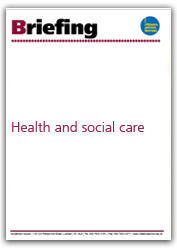Gaps to fill

Citizens Advice evidence on the first year of the NHS dentistry reforms
Summary
Fundamental changes to the delivery of NHS dentistry were introduced in April 2006, aimed at addressing the significant problems which patients have faced over the last 15 years in finding an NHS dentist. Primary Care Trusts (PCTs) in England and Local Health Boards (LHBs) in Wales now have a statutory duty to provide dental services to meet ‘all reasonable requirements’, and have been given ring-fenced budgets to help them deliver this.
National statistics for the first six months indicate that the reforms have been effective in halting the decline in NHS dentistry. However there is little evidence of any real growth in dental services. Thousands of patients are still unable to get on a dentist’s list for routine NHS treatment and access to dentistry is still a postcode lottery. Others face lengthy waiting lists or long and expensive journeys. Patients on low incomes living in rural areas and reliant on public transport are particularly disadvantaged, and patient choice is often non-existent.
People are also unclear about the best way to find out about those services which do exist. One reason for this slow progress is that in 2006/07 the budgets allocated to PCTs/LHBs to implement the reforms were based on the historic spend in their areas. So, where dentistry provision was already under pressure PCT's/LHBs did not receive any additional funding to help them address the shortfall. Therefore PCTs/LHBs’ ability to meet their new statutory responsibilities was put at risk.
This report makes recommendations on what more needs to be done to ensure NHS dentistry delivers a genuinely patient-focused service – an objective clearly reflected in the Department of Health’s key Public Service Agreement target to improve the patient experience. In particular, we argue that additional funding must be targeted at areas where gaps in service are worst to ensure that patients have equal and reasonable access to NHS dentistry, regardless of where they live.

